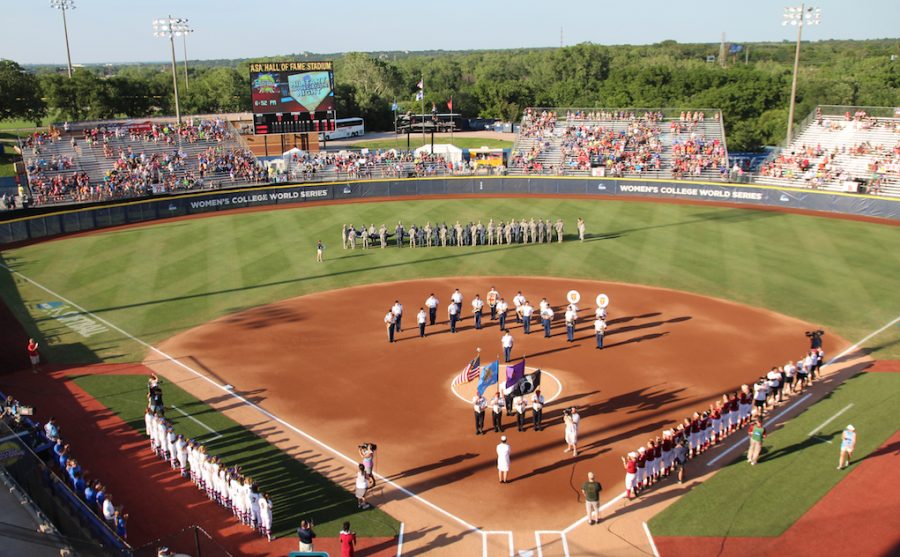NCAA extends the Women’s College World Series
The venue for the WCWS, USA Softball Hall Of Fame Stadium in Oklahoma City.
September 15, 2021
On Wednesday, Sept. 8, the Division I oversight committee approved extending the WCWS to a nine-day series beginning in 2022. Along with the extension of the tournament, last month the NCAA Playing Rules Oversight Panel announced the approval of instant replay. Both were huge steps for college softball.
Oklahoma University Head Coach, Patty Gasso, became collegiate softball’s leading advocate for change during her team’s pursuit of their fifth Women’s College World Series title, amid unprecedented exposure for the sport. Instant replay and a scheduling change were among the top requests.
“I am absolutely thrilled. I think the entire softball community feels the same way. Especially as a team that’s been in it pretty consistently, I just see the physical drain that it has on athletes to the point where, as a coach, you’re uncomfortable playing them,” said Coach Patty Gasso.
During last year’s WCWS, Florida State and Oklahoma State played an elimination game that ended at 2:18 a.m. local time, due to weather delays and the tight schedule. Florida State players did not get to sleep until 4 a.m., and they had to play in another elimination game later that day. Lastly, the deciding third game of the championship series was played on a Thursday afternoon. These events led to backlash and questions about why the WCWS has no off days and follows a tighter schedule than the men’s College World Series. The recent schedule change takes the tournament from a seven-day to a nine-day event, it eliminates doubleheaders for teams who lose on opening day and adds a day of rest in between bracket play and the championship series.
“What we’ve accomplished with this format change for the Women’s College World Series is further prioritization of student-athlete rest, recovery and preparation during the event and more flexibility to manage weather delays in Oklahoma City,” said committee chair Sandy Atkins.
These updates are a big step in the right direction; however, there are still discrepancies between the WCWS and CWS. First, the schedule gave the women’s teams eight days to play up to 17 games. In contrast, the CWS gave the men’s teams four more days to play up to 17 games. Second, The WCWS lacks showers in the locker rooms and covered batting cages for hitters. Lastly, for the men, there is a parade, a VIP golf outing, and a free massage day hosted by Creighton University. The WCWS has no such amenities for the players. These discrepancies do not make much sense when one looks at the statistics comparing the CWS to the WCWS.
The 2021 WCWS averaged 1.2 million viewers, which easily topped that men’s counterpart, which gathered 755,000 viewers on average. The WCWS Championship Series between Oklahoma and Florida State averaged 1.84 million TV viewers, which again easily topped the men’s version; the baseball championship series between Mississippi State and Vanderbilt averaged 1.15 million viewers. Lastly, the 2021 WCWS shattered the previous viewership record and easily became the most-watched world series in history. The tournament drew an average of 1.20 million viewers per game, an increase of 10% from the previous world series, and the three-game final series averaged 1.84 million viewers per game, an increase of 15% from the last world series.









